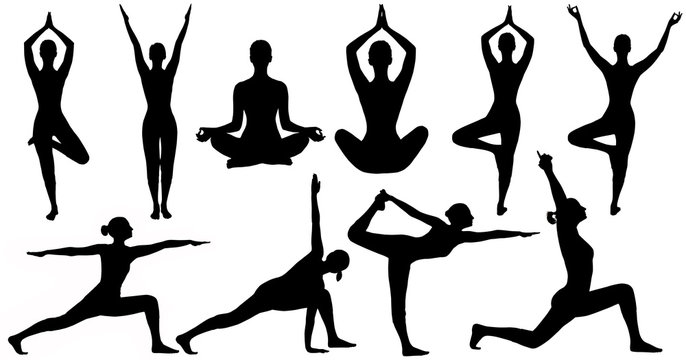Introduction to Yoga

Yoga, an ancient practice rooted in Indian philosophy, has transcended centuries and cultures, evolving into a holistic approach to physical and mental well-being.
Originating over 5,000 years ago, yoga combines physical postures, breathing techniques, and meditation to create a balanced lifestyle that promotes health and tranquility.
The Physical Benefits of Yoga
Flexibility and Strength
One of the most recognized benefits of yoga is increased flexibility. Regular practice stretches and lengthens muscles, leading to enhanced flexibility and a greater range of motion.
This can prevent injuries and alleviate chronic pain. Additionally, yoga strengthens muscles through various asanas that target different muscle groups, contributing to overall body strength and stability.
Cardiovascular Health
Yoga, particularly vigorous styles like Vinyasa and Ashtanga, can provide a good cardiovascular workout.
These dynamic forms of yoga increase heart rate and circulation, promoting cardiovascular health. Even gentler styles, such as Hatha yoga, can improve heart health by reducing stress and promoting relaxation.
Improved Posture and Alignment
Many of us spend hours sitting at desks or hunched over devices, leading to poor posture and related health issues. Yoga emphasizes alignment and body awareness, helping to correct postural imbalances and improve overall posture. This can reduce back pain, neck pain, and other discomforts associated with poor alignment.
The Mental and Emotional Benefits of Yoga
Stress Reduction and Relaxation
One of yoga’s most profound benefits is its ability to reduce stress. Through the combination of mindful breathing, meditation, and physical movement.
yoga activates the parasympathetic nervous system, promoting relaxation and reducing the production of stress hormones like cortisol. This can lead to improved mood, better sleep, and a greater sense of well-being.
Enhanced Focus and Concentration
Yoga encourages mindfulness and present-moment awareness, which can enhance focus and concentration.
By practicing meditation and mindful breathing, individuals can train their minds to stay present, improving cognitive function and mental clarity.
This heightened state of awareness can be beneficial in both personal and professional aspects of life.
Emotional Balance and Resilience
Regular yoga practice can help cultivate emotional balance and resilience. The introspective nature of yoga encourages self-awareness and emotional regulation.
Techniques such as meditation and deep breathing can help individuals process emotions and respond to stressors more effectively, fostering a more balanced and resilient emotional state.
Types of Yoga
Hatha Yoga
 Hatha yoga is often considered the foundation of all yoga styles. It focuses on basic postures and breathing techniques, making it ideal for beginners.
Hatha yoga is often considered the foundation of all yoga styles. It focuses on basic postures and breathing techniques, making it ideal for beginners.
Hatha yoga classes typically move at a slower pace, allowing practitioners to focus on proper alignment and mindful breathing.
Vinyasa Yoga
 Vinyasa yoga is characterized by a dynamic flow of postures, synchronized with breath.
Vinyasa yoga is characterized by a dynamic flow of postures, synchronized with breath.
This style is more physically demanding and is great for those looking for a more vigorous workout.
Vinyasa classes vary in intensity and can include creative sequences that challenge both the body and mind.
Ashtanga Yoga
Ashtanga yoga follows a specific sequence of postures, linking movement with breath in a continuous flow. It is a physically demanding practice that builds strength, flexibility, and stamina.
Ashtanga is often practiced in a self-led format known as Mysore style, where practitioners move through the sequence at their own pacehttps://yubloger.com/
Restorative Yoga
Restorative yoga focuses on deep relaxation and stress relief. Using props like bolsters, blankets, and blocks, practitioners hold gentle poses for extended periods, allowing the body to fully relax and release tension. This style is ideal for those seeking to unwind and rejuvenate.
Getting Started with Yoga
Finding the Right Class
With so many styles of yoga available, it’s essential to find the one that suits your needs and preferences. Consider your fitness level, goals, and any physical limitations. Most yoga studios offer beginner classes, and many instructors are willing to modify poses to accommodate different abilities.
Essential Equipment
To start practicing yoga, you’ll need a few basic items:
– Yoga Mat: Provides cushioning and grip for various postures.
– Comfortable Clothing: Allows for freedom of movement.
– Props: Such as blocks, straps, and blankets, can aid in achieving proper alignment and support.
Establishing a Routine
Consistency is key to reaping the benefits of yoga. Start with short, manageable sessions and gradually increase the duration as you become more comfortable.
Aim to practice a few times a week, incorporating different styles and techniques to keep your routine varied and engaging.
Conclusion
Yoga is more than just a physical exercise; it’s a journey towards holistic well-being. By integrating yoga into your life, you can experience a harmonious balance of body, mind, and spirit.
Whether you’re seeking physical fitness, stress relief, or emotional balance, yoga offers a path to a healthier and more fulfilling life. So, unroll your mat, take a deep breath, and embark on your yoga journey today. Namaste.

No Responses